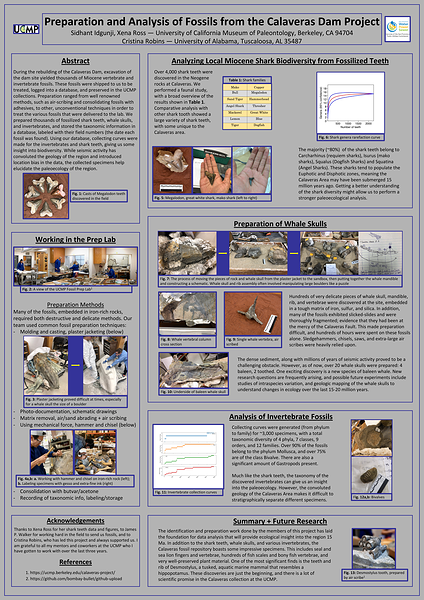 Author/s: Sidhant Idgunji1, Xena Ross1, and Cristina Robins2
Author/s: Sidhant Idgunji1, Xena Ross1, and Cristina Robins2
1 UC Museum of Paleontology, University of California, Berkeley, USA; 2 Department of Museum Research and Collections, University of Alabama, USA
Since 2008, the SFPUC has funded the Calaveras Dam Reconstruction Project in order to improve water storage for Bay Area residents. However, excavation of the dam site yielded thousands of valuable vertebrate and invertebrate fossils. These fossils were shipped to us, a team at the University of California Museum of Paleontology. We treated the fossils, logged them in a database, and preserved them in the UCMP collections. Preparation was not always simple and straightforward, and sometimes a particular fossil required creative measures. A couple examples include the “jacketing” of whale skulls and the use of massive chisels and sledgehammers to break open boulders. At the end of our run, we had collected over 10,000 invertebrate fossils, 4,000 shark teeth, and 20 whale skulls. We collected taxonomic info in a database and created collecting curves for the invertebrates and shark teeth. This quantification gives us some insight into biodiversity and paleoecology. In addition, we discovered rare, unique fossils such as those of Desmostylus, and even a new species of whale. Our discoveries give some insight into the history of the convoluted geology that makes up the Calaveras Dam site.
